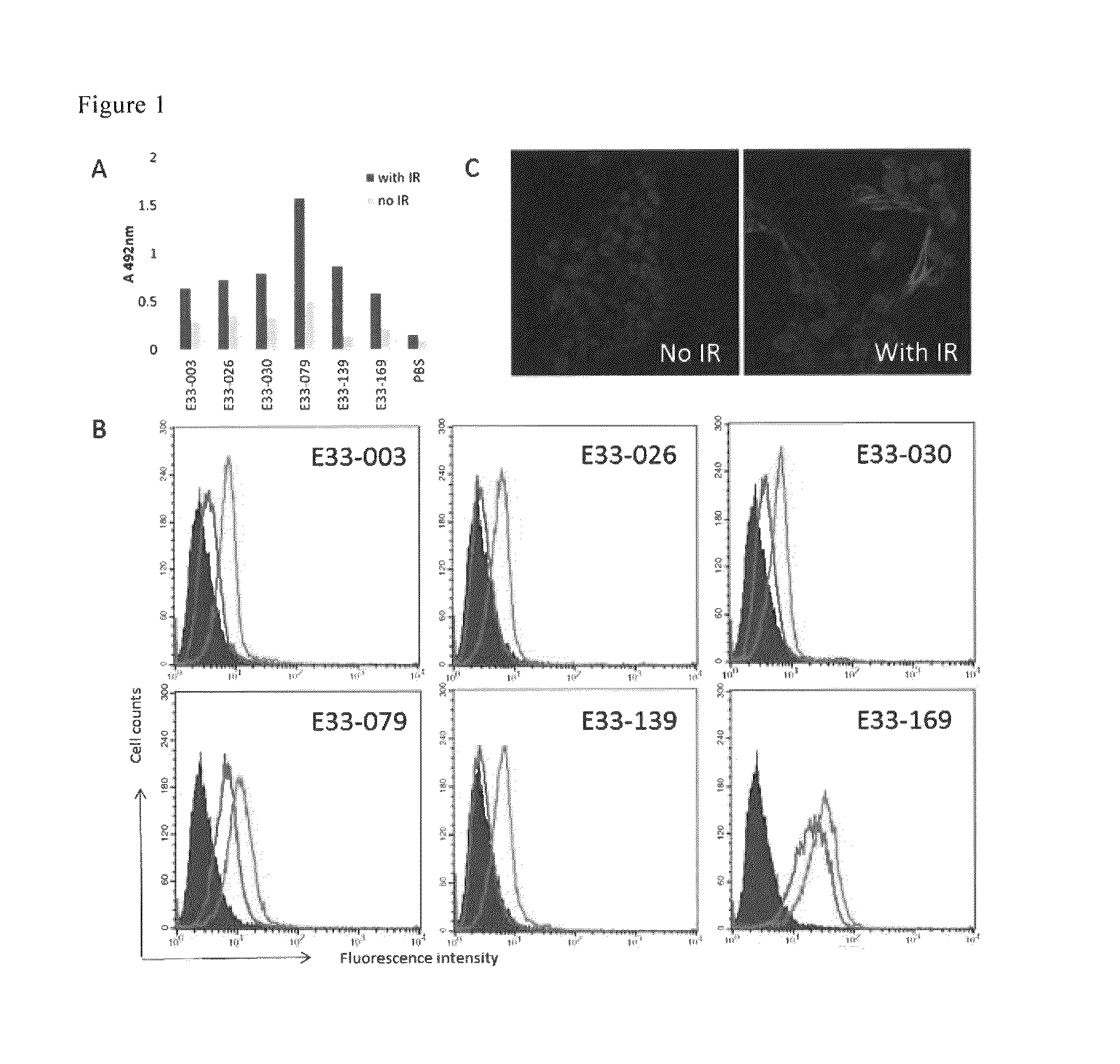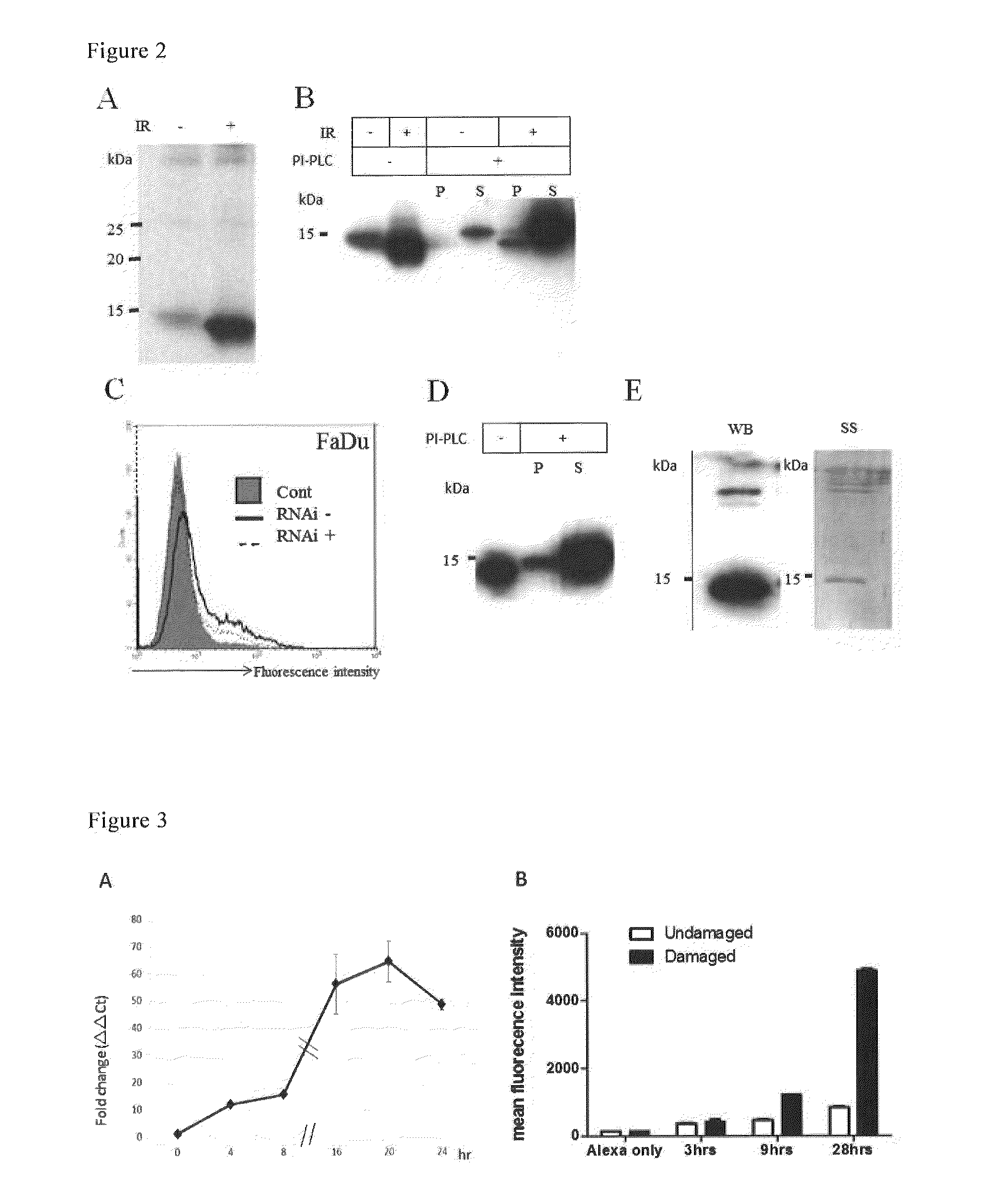Antibody for detecting DNA damage in cells utilizing cell membrane surface antigen Ly6D
a cell membrane surface and antibody technology, applied in the field of detecting cellular dna damage, can solve the problems of inducing strong adverse reactions, difficult to select marker molecules that can be applied in practice, and most difficult for organisms such as cancer cells to repair damage, etc., to inhibit the survival or growth of cancer cells, reduce the antigenicity of antibodies, and high levels
- Summary
- Abstract
- Description
- Claims
- Application Information
AI Technical Summary
Benefits of technology
Problems solved by technology
Method used
Image
Examples
examples
Experimental Materials and Methods
(1) Cells, Antibodies, and an Antibody Library
[0133]The MCF10A cell line was provided by Dr. T. Ohta, St. Marianna University, Japan, and the FaDu and A431 cell lines were purchased from ATCC. Mouse anti-human LY6DAb and Mouse anti-human GML were purchased from Abnova Corp. The AIMS5 antibody library has been previously reported (Morino et al., 2001 J. Immunol. Meth. 257: 175-184).
(2) Cell Culture
[0134]MCF10A cells were cultured in Dulbecco's modified Eagle's medium (DMEM) / F12 supplemented with 2.5% FBS, 1% penicillin-streptomycin, 0.1 μg / ml cholera toxin, 0.5 μg / ml hydrocortisone, 20 ng / ml epidermal growth factor (EGF), and 10 μg / ml serum insulin. A431 cells were grown in DMEM supplemented with 10% FBS and 1% penicillin-streptomycin. FaDu cells were cultured in Eagle's minimum essential medium (EMEM) supplemented with 10% FBS and 1% streptomycin-penicillin.
(3) X-Ray Irradiation and Drugs
[0135]After the growth to confluence, the cells were irradiate...
PUM
| Property | Measurement | Unit |
|---|---|---|
| concentration | aaaaa | aaaaa |
| weight | aaaaa | aaaaa |
| concentrations | aaaaa | aaaaa |
Abstract
Description
Claims
Application Information
 Login to View More
Login to View More - R&D
- Intellectual Property
- Life Sciences
- Materials
- Tech Scout
- Unparalleled Data Quality
- Higher Quality Content
- 60% Fewer Hallucinations
Browse by: Latest US Patents, China's latest patents, Technical Efficacy Thesaurus, Application Domain, Technology Topic, Popular Technical Reports.
© 2025 PatSnap. All rights reserved.Legal|Privacy policy|Modern Slavery Act Transparency Statement|Sitemap|About US| Contact US: help@patsnap.com



